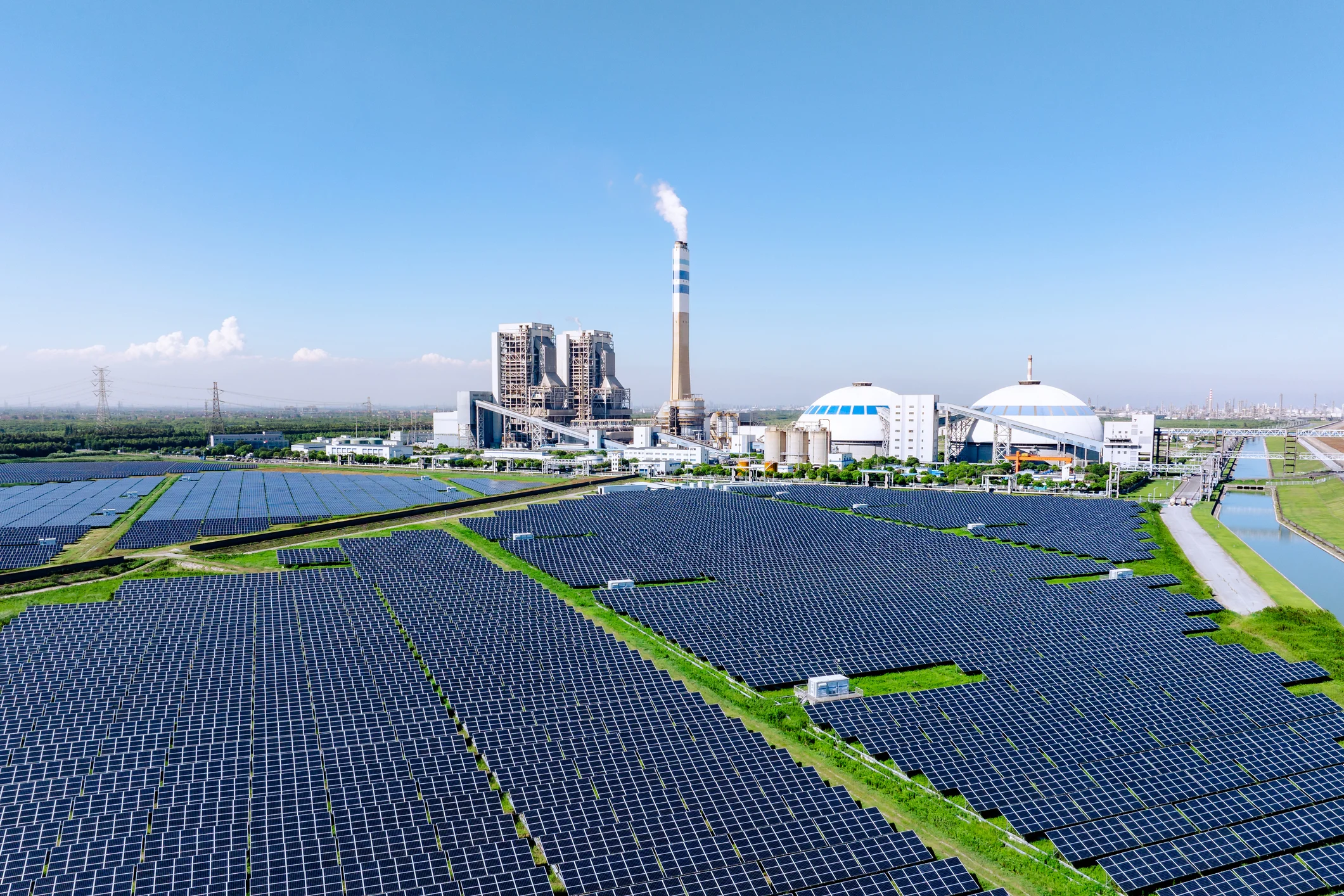Last week, we participated in a live webcast with Utility Dive, entitled “Overcoming DER Challenges to Implement Next-Gen VPPs.” The hour-long presentation (which you can find here if you missed it) covered a variety of challenges and trends that utility operations are facing as the Department of Energy pushes the energy space to triple the use of virtual power plants by 2030. To do that, utilities are turning to demand flexibility programs like demand response, EV charging, and BYOD programs to generate the aggregate virtual power plant capacity needed to meet decarbonization goals AND rising customer demand. Here are some of the key takeaways and questions asked!
The Challenges That Might Block the Adoption of Next-Gen VPPs
Our energy system is progressively complex, complicated by the robust adoption of distributed energy resources (DER), decarbonization and electrification efforts, a national grid in need of incredibly expensive upgrades, and more. As such, previous ways of planning and meeting load growth were easy compared to the variables that our energy system is balancing today including increased occurrences of extreme weather and temperature events, bi-direction energy, and less predictable load patterns.
To overcome these challenges, utilities need a mindset change. Rather than relying on the utility-held DER assets aggregated by a Grid DERMS platform, reconsider virtual power plants as not just a customer program, but a real tool that can be used for delivering capacity when needed, as well as for grid management. By contrast, using a Grid-Edge DERMS platform, utilities can manage behind-the-meter DER assets, flexible resources that can help address lots of the challenges and unpredictability plaguing utilities, while providing the benefit of scalability and optionality. To do that, utilities must tackle this trust issue – overcoming the perceptions that have haunted virtual power plants to date.
Internal Siloing
Generally speaking, customer teams are responsible for engaging with customers who enroll their devices – the devices that enable virtual power plants. Meanwhile, operations teams are responsible for calling events and using virtual power plant capacity to support the grid to hopefully provide a lot more VPP capacity than utilities see through demand response programs dispatch alone. Between the two, there’s a growing collaboration opportunity here!
– Kirsten Millar, Director of Policy and Solutions Partnerships, Virtual Peaker
“I think this trust issue is important,” says Kirsten Millar, Director of Policy and Solutions Partnerships. “One challenge might be, how do these customer program and operations staff build trust internally at their utility?”
Beyond that internal trust building at the utility, there is also trust that needs to be built with regulators, evaluators, and stakeholders. For example, the typical energy efficiency methodology of questioning each kilowatt hour saved needs to shift. Unlike energy efficiency, utilities have immediate feedback and results from virtual power plants through device data, so the proof is in the execution of VPPs and their events.
Hopefully, that helps set this mindset of opportunity and new possibilities, which is all anchored in this trust within the utility, with virtual power plant vendors, and with regulators and stakeholders.
Resources & Scalability
Getting to scale & increasing customer opt-in is critical to the success of any virtual power plant strategy. From a resource perspective, utilities need to continue to strengthen the relationship between energy providers and customers, namely to foster enrollment and participation in demand flexibility programs. Remember: all of this is moot if there are not enough customer DERs enrolled.
It’s because of this paradigm shift that utility customer engagement has become so pertinent in the 21st century. Gone is the relative one-way relationship between energy provider and customer, replaced with a growing symbiotic relationship that supports the load flexibility initiatives necessary to meet increasing demands. To do this, utilities may:
- Build trust with customers – Customer perception of their utility provider may vary from region to region and may be extremely confusing & overwhelming to navigate for customers. That’s why customer education is critical!
- Make customer DER programs and participation easy and worthwhile – Lowering barriers to enrollment and participation is critical to developing increased virtual power plant capacity
- Determine the right technology to enable smooth customer experience AND reliable control – Perform market research to ensure that the behind-the-meter DER assets that utilities employ in their demand flexibility programs are the most common to consumers in your area.
Operational Skepticism of VPPs
Utilities have seen behind-the-meter DERs largely as an unpredictable resource, typically used as a last resort by grid operators due to intermittency issues. That intermittency may manifest as low customer participation rates, inclement weather decreasing renewable energy capacity, or more. What we’ve seen at Virtual Peaker is that:
- Demand flexibility solutions are “virtual” – Utilities are uncertain of behind-the-meter DER aggregation because they don’t “own it” to control and maintain their assets, which is compounded by uncertainty over customer actions and behaviors
- The impact on demand is immediate, but the amount and duration of load reduction are uncertain and lack fine control.
- Grid operators currently have limited to no control over the shape of the load – Because success is critical to the continuity of energy services within a community, reliable access to power is essential.
Altogether, these conditions have led to a lack of faith and trust by grid operators within the conventional virtual power plant model. For now, the result is that the operation of virtual power plants and their benefits sit more squarely on the customer program side of e.g., a utility. Even utilities that have seen growing DER adoptions still have limited access to participate in the wholesale markets. Fortunately, there are promising new opportunities for utilities.
What the Next Generation of Virtual Power Plants Look Like
The Next Generation of virtual power plants will gain trust by giving operators visibility, predictability, and precise control. This functionality is realized through Topline Demand Control, an innovative combination of AI, model predictive control, a Grid-Edge DERMS, and forecasting software, all of which optimize individual behind-the-meter DER assets and more to ensure a reliable outcome. Through Topline Demand Control, utilities will be able to have more precision control in shaping aggregate DER performance, to reliably provide a precise and constant load shape to the grid for a planned block of time.
How VPPs Create Reliable, Constant Load Shapes
First, predictability is key. Next-generation VPPs will incorporate machine learning and advanced control algorithms to predict the performance of aggregated DERs, based on:
- customer behavior patterns
- program parameters
- weather forecasts
- technology constraints, and other variables
Next, precise device control is critical. Through the Internet of Things, technology is advancing to provide a nuanced dispatch of the available resources. After predicting the aggregated performance of DERs, advanced VPP software with Topline Demand Control capabilities actually works to shape the DER load performance to the way you want it.
As such, instead of seeing load perform with a dramatic drop-off and then snapback, you can instead set specific parameters and Topline Demand Control will reliably manifest your requested demand outcome. For example, if a utility requests 2 MW, for 4 hours tomorrow, Topline Demand Control realizes this through the use of automation and complex control signals to optimize control of DERs. In other words, TDC works by staggering, and adjusting the control signals across the DER resources in a virtual power plant to hit a constant capacity level, making the VPP more reliable and useful.
By contrast, the conventional virtual power plant way of that initial drop off and gradual return of demand is much more difficult for utilities and grid operators to plan and employ. Topline Demand Control was designed to address these inefficiencies, through precision in shaping DER load performance down to the device level, yielding a far more reliable and useful outcome. is much more useful. As such, as we see DER adoption scale and grow, for it to be a resource that can play a more serious role in resource adequacy or to defer distribution infrastructure upgrades, you need to be able to reliably predict, see, and control the output of the aggregate resource.
The Benefits of Next-Gen Virtual Power Plants for Grid Operators & Utilities
In addition to meeting new regulatory requirements and generally contributing to the future of grid stability and carbon reductions, virtual power plants hold many specific advantages for operations teams as well as overall utility benefits.
Next-generation virtual power plants will be able to provide advanced grid services beyond just demand response, which makes them more valuable than today’s VPPs. Utility planners are on the frontlines of utility resourcing decisions. They’re using models to predict future electric loads and forecasting electric supply from a massive number of resources to predict future system costs. And now these models have to account for distributed resources. The next-generation of VPP software capabilities can more precisely and accurately predict load control throughout an entire duration of time, allowing DERs to become a reliable source of energy.
The Financial Benefit of Next-Gen VPPs
Cost savings are another enormous benefit that VPPs can offer utilities. Next-generation virtual power plants are a dependable resource that utility planners can include in their resource plans that are more cost-effective than gas-powered peaker plants. The US Department of Energy says that VPPs could save utilities about $10 billion annually. Those savings can then be passed onto ratepayers, helping reduce the upward pressure on rates.
Conclusion: Overcoming DER Challenges to Implement Next-Gen Virtual Power Plants
Virtual power plants represent a powerful opportunity for utilities to benefit from the explosion of behind-the-meter DER adoptions. As an expense savings strategy, virtual power plants are useful in mitigating grid congestion and deferring costly grid updates while maintaining more grid stability. Distributed energy resources can be considered where there may be congestion along the distribution grid, allowing more efficient use of the grid. Location-specific, non-wires alternative solutions can pinpoint locations along the grid that are experiencing congestion, and ease constraints in those areas during peak energy periods. The newest virtual power plant technologies can predict local DER performance and intelligently dispatch them during specific peaks just along certain parts of the grid, providing reliable, dependable outcomes.






